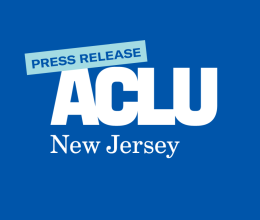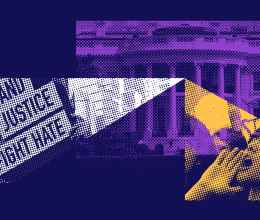
In a term filled with controversial decisions, the U.S. Supreme Court recently decided two cases, Students for Fair Admissions v. President and Fellows of Harvard and Students for Fair Admissions v. University of North Carolina, reversing decades of legal precedent by striking down affirmative action and ending educational institutions’ ability to consider an applicant’s race as one factor in a holistic review process.
This outcome was not a surprise, but a confirmation. It confirmed that the current Supreme Court majority has a total disregard for legal precedent, a complete willingness to detach constitutional promises of equal protection from the legacy of slavery, and a full commitment to the false and carefully crafted narrative that racial hierarchies no longer exist.
But these confirmations do not change reality. As Justice Ketanji Brown-Jackson put it in her potent dissent, “Deeming race irrelevant in law does not make it so in life.”
The Students for Fair Admissions (SFFA) decisions support an underlying falsehood that laws providing protections to Black people from discrimination somehow take away from, or harm, other races. The court majority extended this false idea of harm to an undefined group of “Asians,” but the truth is, this was never about protecting Asian students, or any other group. It was always about limiting access to Black students, a long-term goal of SFFA’s mastermind, Edward Blum.
A “race neutral” reality doesn’t exist. The benefits and advantages bestowed on white people continue uninterrupted as they always have. It’s the red-hatted “great again” refrain that calls for a return to a time when the social and political advantages white people have enjoyed since the founding of this country went unchallenged. One can only wonder, to what point in history, exactly, is the intended return? Looking back 50 years, we remain inspired by the creeping progress we’ve made toward a more just and equal reality – any attempt to return to past ideals carries with it the harm of regression on a grand scale.
A holistic, race-conscious admissions process is part of every college and university’s academic freedom to assemble a diverse student body and ensure this progress continues. As schools create more educational opportunities, students across every race, ethnicity, and income level seize them, creating the next generation of leaders who, in turn, create even more just futures. While race-conscious admissions open the door to institutions of higher learning for students of color, it doesn’t keep them there. Their abilities do.
The court’s majority acknowledged this truth, but cherrypicked how it can continue to be applied: the military. For them, affirmative action is “worth it” when one is willing to die for the United States, just not when one seeks to be educated here. As Dr. Martin Luther King Jr. said directly after the 1968 My Lai massacre in Vietnam: “We have been repeatedly faced with the cruel irony of watching Negro and white boys on TV screens as they kill and die together for a nation that has been unable to seat them together in the same schools.”
The reasons provided in support of race-conscious admissions — training future leaders, acquiring knowledge based on diverse outlooks, promoting a robust marketplace of ideas, and preparing an engaged and productive citizenry — are deemed “standardless” in the majority’s opinion. In other words, the majority recklessly labeled institutions that value race-conscious admissions in pursuit of a diverse, well-informed student body as violators of equal protection laws. As Justice Jackson put it, this only exacerbates harm: “If the colleges of this country are required to ignore a thing that matters, it will not just go away. It will take longer for racism to leave us.”
In the wake of this ruling, it’s more important than ever before for colleges and universities to reinforce their commitment to providing equal opportunities for all students. That means ending reliance on standardized testing, expanding financial aid, and ending legacy admissions — a process that imparts preference for applicants with family members who are alumni, the overwhelming majority of whom are white and wealthy. College admissions clearly already favor those who have benefited from generations of systemic privilege – the “varsity blues” scandal painted that fact in bright colors for the world to see. This systemic preference should be considered a dangerous flaw, one that race-conscious admissions began to address and eliminating legacy admissions would continue to unravel.
Our mandate is clear. Calls for a return to the past have always been with us — but there has never been a time when it has been less in our country’s best interests to do so. We must strengthen and support our education systems to better serve all students, especially underserved ones. Colleges can, and must, consider the impact of racist histories and systems on applicants — particularly Black students who have and continue to face idiosyncratic harms — in alternative ways, and that means investing in breaking down old racial barriers and building new systems that unify and equalize by seeing all lived experiences in their beautiful and fraught complexity.
As King also poignantly said, “A society that has done something special against the Negro for hundreds of years must now do something special for him, in order to equip him to compete on a just and equal basis.” We have an obligation to move our reality forward toward one that perfects the promises of our nation’s most hallowed documents for all, not selectively, not partially, but completely.
This piece was originally published by New Jersey Monitor.




